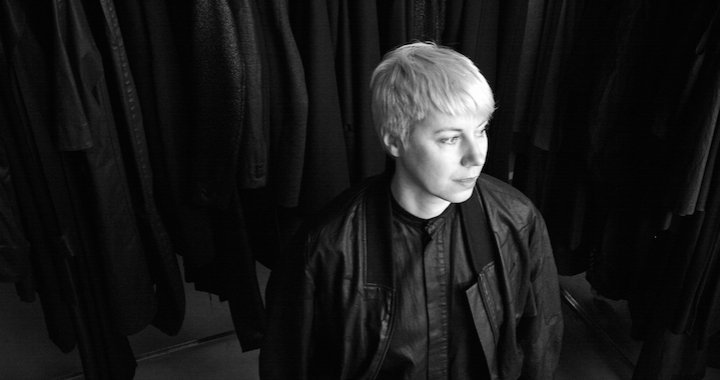
The time of personalities in fashion has passed
An interview with Latvian fashion designer Keta Gūtmane
17/07/2015
I won’t deny that it’s a true pleasure to walk into Sprmrkt, Amsterdam’s most stylish concept store, and see Keta Gūtmane alongside Rick Owens, Raf Simons, Damir Doma and a host of other vibrant names in the fashion world. Especially because so-called wearable fashion is a new niche for Gūtmane, who up until now has been much better known as a conceptualist. When we spoke several years ago – when Gūtmane and Mārtiņš Grauds’ short film Lust Lust had won the main prize at Diane Pernet’s A Shaded View on Fashion Film festival – she described fashion as being “a gigantic platform of opportunities in which the designer may use any form of media and is free to work within the bounds of his or her imagination”. Her fashion language now includes a few new quantities, such as “rationality” and “perceptibility”. The Keta Gūtmane brand was established only a year and a half ago, and next autumn’s season was its third collection to be presented at the Void showroom in Paris. But Gūtmane is still only finding her bearings in the global fashion business; it’s like a workout in a huge gym, she says with a laugh. Right now, she most of all just enjoys the process itself, although she has already made three significant observations, namely, her designs are competitive, she feels she has been included in a certain group of global designers who all share the same thoughts about design, and nationality has no meaning in today’s fashion scene.
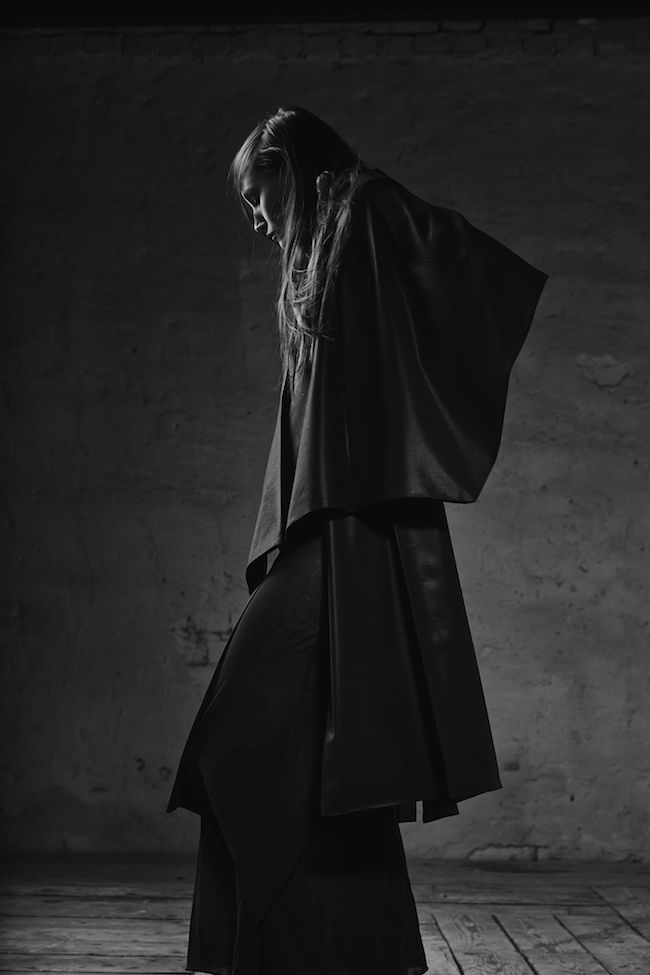
Autumn/winter collection 2015. RETURN. Photo: Mārtiņš Cīrulis. Style: Marlo Saalmink
How paradoxical – considering how long you’ve been in the fashion world – that the Keta Gūtmane brand is only a year and a half old.
Yes, it’s still only the very beginning. This was only our third season in Paris. Of course, the idea of establishing my own brand was always somewhere in the back of my mind. That’s just logical evolution. But earlier, it was more of a kind of artistic egoism – you work only for yourself, you don’t look outward very much, you don’t offer what you’re doing to a wider audience. And what you create isn’t accessible or really wearable. So, there’s also not a clear path of further development.
Did you arrive at a kind of dead end?
I don’t think it was a dead end. Rather, it was a completely logical next step in my personal development. A path along which at first you’re more with yourself, and then, when you feel you have something to share, you go further.
Did you have a clear vision of your niche when you decided to establish your own brand? Because the market is insanely oversaturated – with clothes, information, everything imaginable.
Yes, the market is oversaturated. But the excitement comes when you realise that, with your thoughts about design and everything that you’ve done up until then, you really do belong – on a purely emotional or spiritual level – to a specific group of designers who have also travelled the same road as you. Of course, my road will have been slightly different, but the way in which a brand identity and a team is created, as well as the way in which you decide where to be – say, on the outside – all of that is the process that is so exciting to me right now.
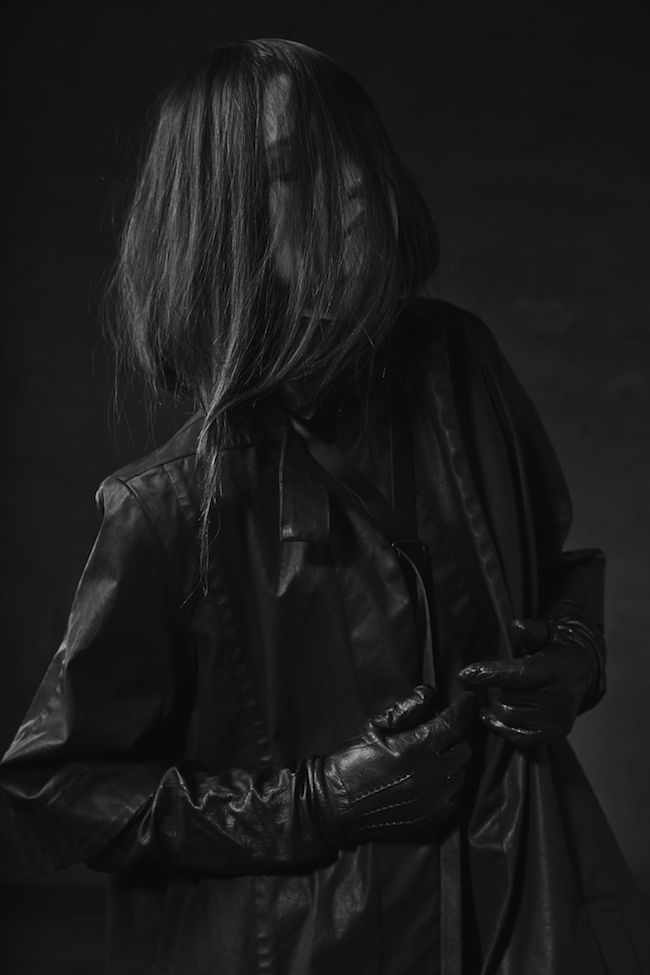
Autumn/winter collection 2015. RETURN. Photo: Mārtiņš Cīrulis. Style: Marlo Saalmink
What is the group to which you feel you belong?
The people who’ve concentrated around Japanese and Belgian design. In general, designers who’ve left an impression. McQueen, Galliano – both of them have written themselves into history, each in their own way.
By the way, a great book called Gods and Kings: The Rise and Fall of Alexander McQueen and John Galliano recently came out. It’s a story about the two of them in the same context of time. And also about burning up.
Of course, you cannot protect yourself. You have to continue on ahead. You don’t compare yourself to the greats. I’m something different; I’ve developed according to a different set of rules. But that’s the reason we’re here in this world – to go through certain processes, to gain experience. Be it family, relationships or the field you work in. Of course, it’s a question of how massively you burn up. But, when they first set out on the road, no one ever thinks about how they’re going to burn up. In the beginning they all think everything is possible.
What was your first foray like as a new brand in the global business of professional fashion?
Interesting and exciting, from the point of view that you’re in completely unknown territory, don’t know the showroom rules and don’t know how to communicate with collection buyers. You don’t know very many things, which is normal. But what isn’t normal is that there’s no one to ask for help. Unfortunately, we don’t really have a heritage of fashion, and so we lack experience – no one talks about that at school. Therefore, you’re unprepared, crazy, and you just get up and go. It’s like jumping into cold water – you’ve arrived, and everything else depends on how quickly you’re able to take account of the situation, learn from it and orient yourself in it. But, at the same time, you understand that everything’s OK with you as a designer, that you’re equal to all the others in the showroom. The only thing that’s different is that you’re from a different country, a country no one has any idea about in the context of the fashion world.
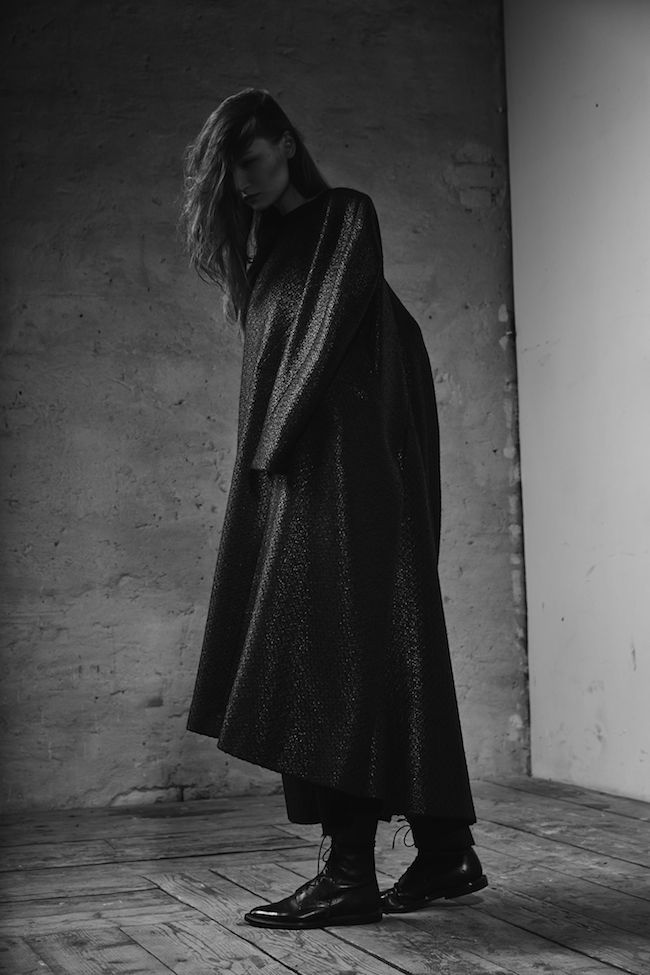
Autumn/winter collection 2015. RETURN. Photo: Mārtiņš Cīrulis. Style: Marlo Saalmink
Do you feel that nationality still has meaning?
From the standpoint of design, of course not. I create European fashion, not Latvian fashion, because there’s no such thing! There’s no stereotype of Latvian fashion design in the global fashion context. The difference is in experience, because we don’t have fashion industry traditions. It’s too bad that no strong Latvian fashion brands emerged in previous generations, or that we haven’t developed a textile phenomenon, like the Scandinavians or Belgians. Nowadays, it’s possible to learn very quickly; the advantage of globalism is that, by being in the professional environment, you can solve simple and self-evident issues very easily, and you have access to a variety of information sources.
In today’s world, can we still talk about a concept like “national design”? Latvian fashion, for example?
Globally, I don’t think it’s relevant anymore; the world has changed. The question is whether the place or region you’re from still has any meaning. In my opinion, I don’t think that’s so important anymore. In order for the world to turn its attention to Latvia, our country would have to produce a group of strong fashion and accessory designers. They could even be quite different from each other in their design thinking and ethnicity; what’s important is this unit, that they’d be a group of strong, worldly-minded designers who can compete on the world stage.
Of course, we can try talking about “national design”, but it doesn’t exist in the design world. Latvians have their idiosyncrasies – we speak a strange language, we have a particular history, we are more introverted compared to the larger countries – but are these characteristics reflected in our design? Most likely not.
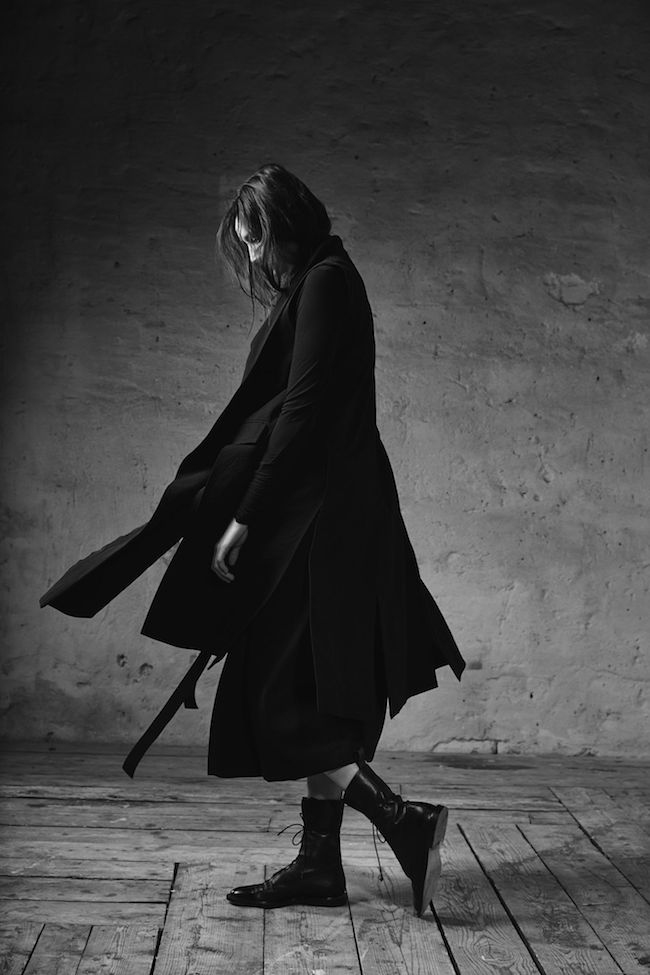
Autumn/winter collection 2015. RETURN. Photo: Mārtiņš Cīrulis. Style: Marlo Saalmink
Actually, you’ve made quite a jump from very unwearable and artistic clothing to distinctly wearable clothing. How do both of these extremes exist within you?
The thing is, right now very much needs to be created rationally, and those are different challenges. My design language needs to become perceivable. I must learn to speak about it more widely, I must learn to converse, for example, with a manufacturer, who has a completely different language and approach. I need to be able to converse in that language, too, just like I need to communicate with the people who work for me. The human factor is very important – it’s like a chain in that everyone is connected and a certain logic governs every segment. In effect, it’s like a constant dialogue that needs to be maintained between all of the involved people. I’m constantly learning something new, accepting challenges, solving problems. I’m in an endless process of study.
What happens to your original idea? Does it get transformed in this process of conversations?
It does transform. In a way, I end up having to divide up those big ideas into smaller pieces. It’s no longer one large, massive thing; instead, it’s like several smaller impressions that in the end create one large body anyway. And with each coming season I go over everything again, thereby trying to take the next step forward.
When I was in Japan last autumn, I was quite surprised to learn that it’s mostly Western tourists who buy all the well-known Japanese brands, while Zara is the most popular brand among the locals. I was quite saddened by that.
It is sad, but unfortunately that’s the world we live in. And I don’t think it’ll change; it’ll only spread. The group of fashion designers that I consider more or less my peers is relatively small. You can really see that when you’re in a showroom in Paris – from season to season it’s almost always the same faces who are interested in this type of design. There’s almost no one radically new among them. Yes, it’s a small environment and you have to remain within the framework.
If we assume that clothing is a language, then its form of expression has markedly changed in the past decade.
Yes, and it will change even more. I agree with Yohji Yamamoto, who said in an interview that everything is going to become even thinner and sexier. Super-fast and cheap, because tomorrow it’s gotta be something different again. That’s the way it is, that’s reality. And it’s not easy to change that; it takes time.
Have you understood what in clothing is valuable to you?
I think perfect craftsmanship will always be a core value. The knowledge about what a well-fitting jacket means. Any product. On the other hand, the mainstream is currently so huge precisely because this perfect craftsmanship is no longer necessary. People need “non-sitting” clothing, clothing that can be changed quickly and need not endure. But for me, construction and the craftsmanship with which a piece of clothing has been made will always be the main thing. Details, the material – those will always be the main things in fashion. And no mass producer can take that away. It’s immediately obvious which pieces have been skillfully made and which clothes are just pieces of fabric that have been thrown together. Yes, that’s a certain style, too, and it’s also in demand, but that’s not my style. Even though I realise my own approach is already a bit “old school”.
Over the past year and a half, have you come to understood who is the potential wearer of your clothing? What is this person like?
Yes, I’m slowly beginning to get to know this person. But it’s a long and complicated process because, despite the forecasts, there’s always a surprise when the wearer comes to you.
It seems that your niche might be creative personalities.
Surprisingly, that’s not always the case. Especially in Latvia, which is still very conservative.
But at the same time, in the public space it seems that the local fashion scene has picked up speed. It seems that more people are choosing Latvian design. Do you feel this?
I still see a lack of modern fashion and accessory concept stores, stores with tasteful interiors selling the newest and most current global fashion brands. I know from speaking with store owners about how small a percentage of Latvian shoppers can afford to buy clothing by Latvian fashion brands – the best-quality brands. Mostly it’s foreigners who shop at stores selling Latvian fashion brands.
Yes, the public space is picking up speed, but I’m still quite critical of the local “fashion life” and think that fashion design is still something of an orphan child in Latvia. If we look at state support for the creative industries, say, the Culture Capital Foundation – who’s on the design committee evaluating projects? There’s never been anyone from the fashion industry on the committee, someone who could evaluate the needs, to say nothing of the fact that the criteria for judging fashion design applications have not been developed. OK, that’s only one institution, and a poorly funded one at that. But what’s going on in other state institutions? It’s the same problem – a lack of competent people. At least that’s been my experience. And I believe that’s also one of the reasons why the local situation is the way it is.
I’m also critical of people who organise fashion platforms and fashion events here. Above it all you can feel a lack of good taste and worldliness, which inevitably leaves an impression on the next generation and also on the way local society perceives fashion life.
By now, it’s all become quite comfortable. In effect, it’s a part of that big mainstream wave that’s rolling over everything right now. It’s reflected in the local environment as well. But I feel bad for the handful of students who have remained in Latvia to study fashion design, because they really have nothing to look at on the local scene. If they want advice or to see good-quality design, there’s really nowhere in the public space for them to look.
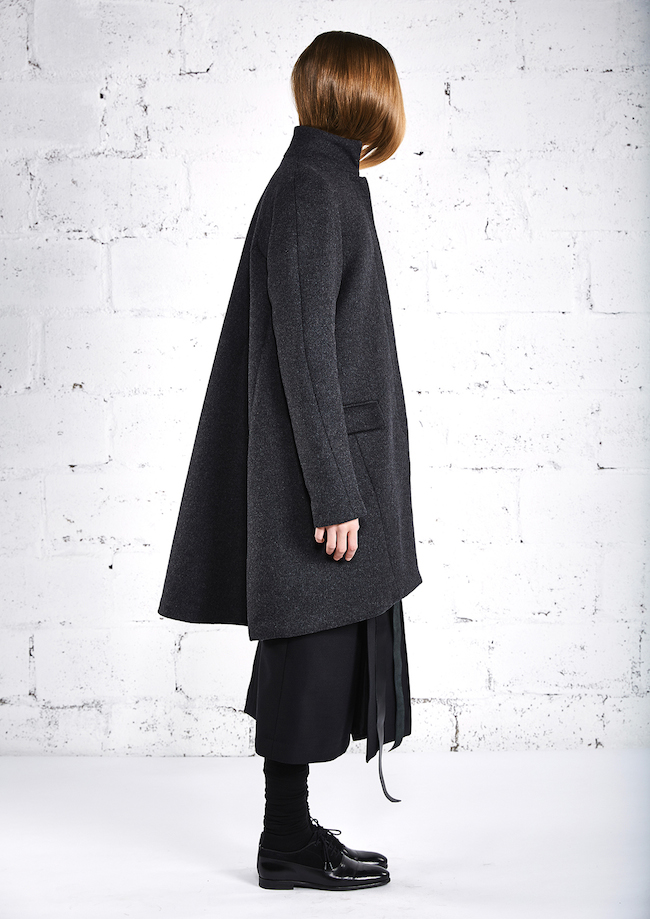
Autumn/winter colelction 2015. RETURN. Photo: Mārtiņš Cīrulis
But people are quite individualistic. So why have they run towards the mainstream so easily?
Zara is on rue Saint-Honoré in Paris, and that says it all. It’s only going to continue. Small, powerful things will become quieter and quieter, and the huge orchestra twanging its guitars and everything else will become louder and louder. I think the time of personalities in fashion has passed. Look at how Maison Martin Margiela has changed since Margiela or Ann Demeulemeester left. In place of strong personalities, we now have several cooks in the kitchen; everything is collective, mass, bulk. That’s also why the mainstream is becoming even more massive.
Strong personalities are not profitable in the era of fashion conglomerates. It’s no wonder there have been such great efforts to get rid of them over the past decade. It seems there’s only one dinosaur left of the old guard – Lagerfeld. Fendi in the 1950s, Chanel in the 1930s – no one else has been around as long as him.
He’s a monster. And he’s the king right now. He’s the only one left.
On the other hand, of course, is the absurd paradox – Margiela is alive and continues to work somewhere, but Galliano is in his place. It’s kind of like getting a transfusion of a different blood type.
Yes, somehow the blood types don’t really match.
What do you think – does today’s shopper even care who is the designer behind a certain brand?
Well, individual shoppers and buyers have different perceptions and approaches. For Asian buyers, a brand’s DNA is not important, whereas prestigious European store owners do find it important. In Paris’ showrooms, buyers simply do not have enough time for long conversations about seasonal concepts and a brand’s DNA; such topics are rarely discussed in that environment. Instead, buyers look at clothing like a kind of skin – how will it look on other people and how will it fit into the rest of their offerings. For them, the main thing is tactile sensation; they feel the physical quality immediately. They just run a hand over the collection. In other words, does the physical quality correspond to what they’ll be able to sell. The next thing is the seams; they have well-trained eyes. And then comes the price, the quality and the place where the garment was made.
Interest in the brand is studied before then. Later, it comes under the magnifying glass, and the brand’s development is followed, and so on.
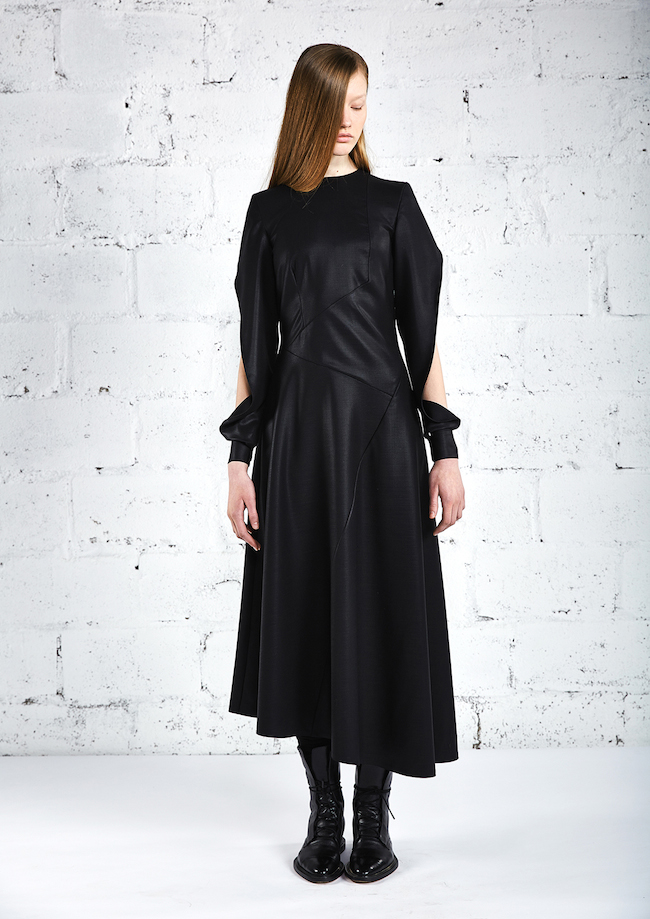
Autumn/winter colelction 2015. RETURN. Photo: Mārtiņš Cīrulis
But brand and a brand’s story has long been a part of the fashion business mythology, and it’s been carefully cultivated for decades.
In today’s fashion industry, however, where these processes take place so quickly and there’s just so much of everything around, it’s simply impossible to follow the story of every brand. That’s hard to do. Both learning and choosing.
Have you understood what kind of tactile sensation sells today?
Of course – good quality sells. As a designer, I have a very similar sensation to a buyer. Experience allows the fingers to feel it themselves. The fingers immediately recognise a blended fibre; they know what’s polyester and what’s a natural fibre. But then come all the other criteria – quality, price and so on – and, when you add it all up, then you can decide on one piece or another.
When working on a new collection, do you pay particular attention to the tactile sensation?
Of course. Even more so because I work with a monochrome palette, in which the texture and physical quality of a fabric is very important.
At the current moment, when it seems that everything possible has already been seen and created, do you think physical quality can still evolve further?
I think physical quality is the only aspect where anything is still possible. That’s confirmed by the Première Vision shows. Another issue is which brands always choose the newest that’s available and which brands look more to the classics, because there’s development there, too. For example, I’ve got a Japanese manufacturer with whom I’ve been working for already two seasons, and he works only with natural materials. But the structure of the materials he offers changes every season. The composition is the same, but the structure changes. It’s very interesting.
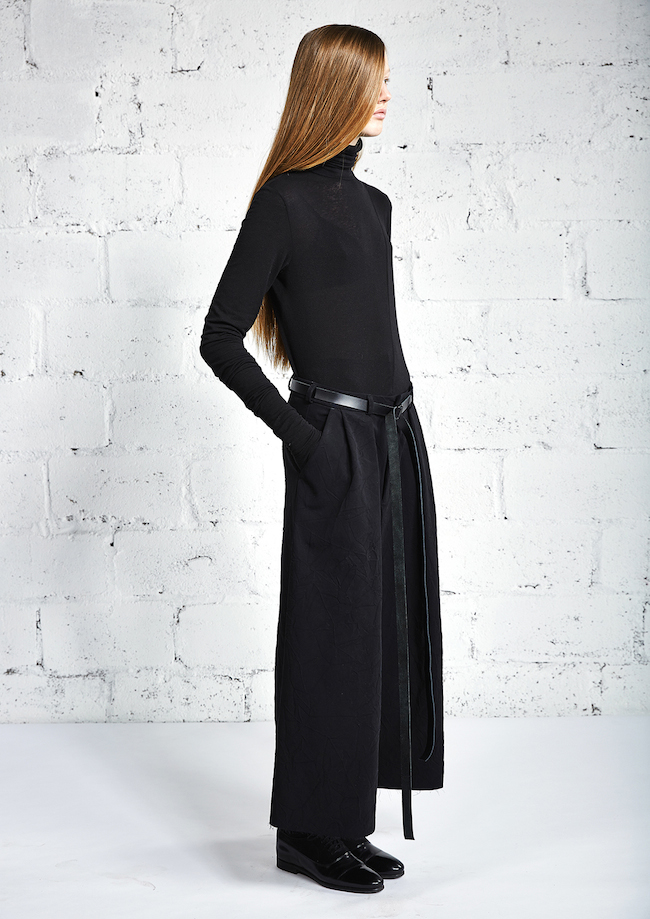
Autumn/winter colelction 2015. RETURN. Photo: Mārtiņš Cīrulis
You’ve often turned to spiritual and religious aspects in your concepts. Does clothing possess energy?
I think it does. But it’s saturated with energy only if the designer works as I do now, in small quantities. If the designer controls the creation of a new collection and participates in the process. Then it’s my own energy that I leave in the material as I look at it, cut it and so on. But as soon as it becomes a factory process, the clothing no longer has energy.
And the difference is that the thing you create yourself is a garment, whereas factory-made clothing is in effect just packaging.
Yes. That’s why I think it’s so important for every brand to think about how it sees itself in the future. The mainstream process, which we talked about earlier, will always exist parallel to them. Of course, you’re free to jump out of the game at any moment if the rules become unbearable. But then it might not have been worth beginning the process in the first place. Although...there are other things in life that you can do, too.
But this game is also a continuous workout.
All the time. It’s one hell of a workout. And it demands concentration. It’s not about the designer just sitting around and waiting for inspiration while someone else does all the work.
What gives you the most satisfaction?
The process. Working with your own patterns and constructions, your thoughts about the body for whom you’re making all of it. Functionality and wearability are very important to me. Those are really big qualities, because it’s not that easy to combine good design with functionality and wearability. It’s a constant workout. It’s a process you go through, because you make a lot of mistakes. And then you try to figure out how to improve it all. That takes time, but right now it’s interesting for me to go through each of these stages.
Are you one of those designers who wears their own clothing?
Yes. But sometimes it becomes too heavy for me and I feel like wearing something lighter.
Too heavy in the sense of design, or of its own accord?
All together. Sometimes you just get tired of yourself. But you need to wear your own designs, wash them and then wear them again. That’s the research, when you understand what works and what you’re offering to your clients.
As Yves Saint Laurent used to say: if a garment isn’t worn, it dies.
It dies at the moment that’s said. But if the garment is carefully stored, I assume there will come a time when it will come alive again. And that’s what sustainable, enduring design means. Go figure what exactly that is. But that’s the challenge. Figuring out what will endure from this mass of things.
Have you created anything like that?
I’ve created a couple of things.